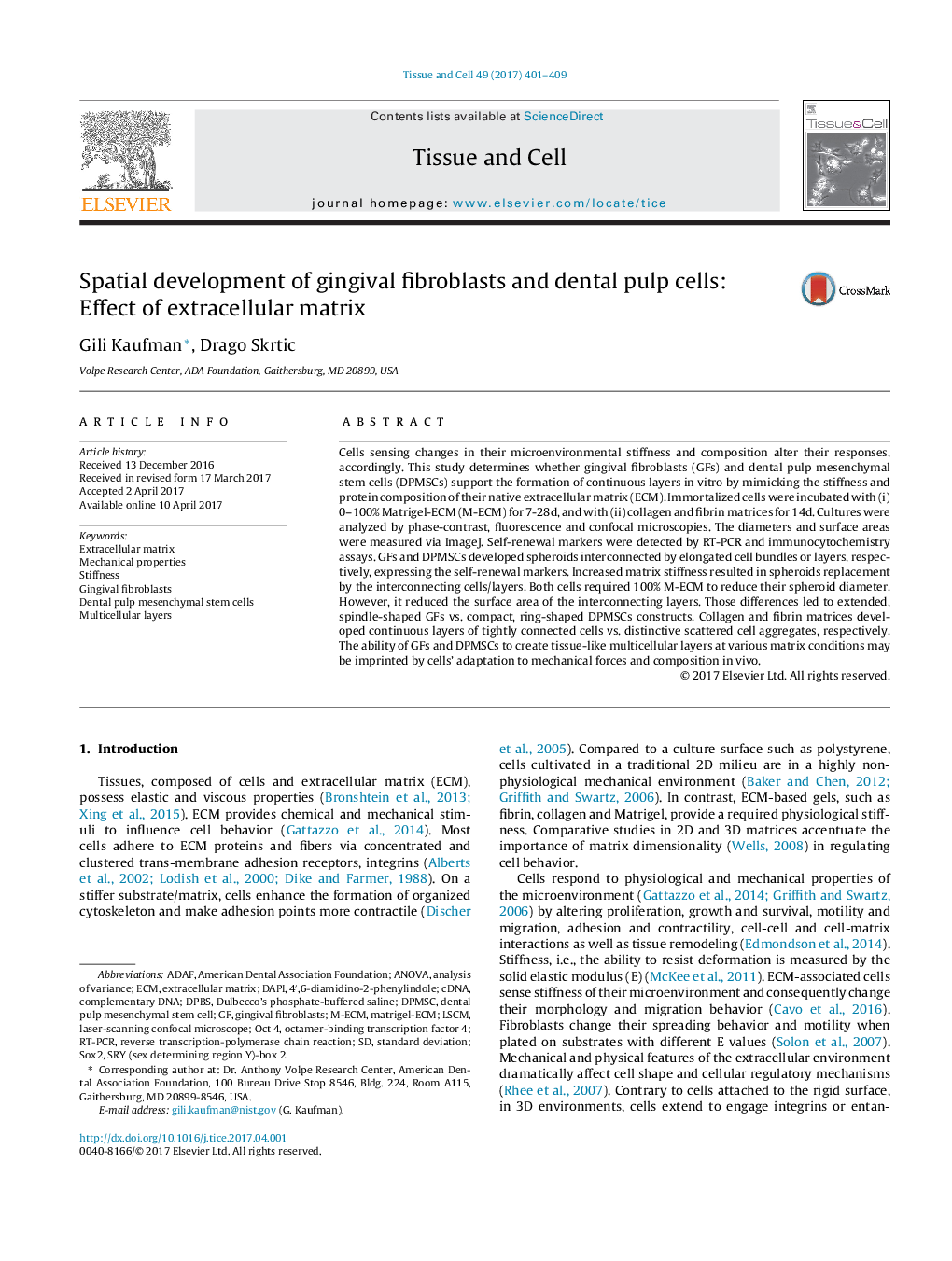| کد مقاله | کد نشریه | سال انتشار | مقاله انگلیسی | نسخه تمام متن |
|---|---|---|---|---|
| 5535083 | 1402212 | 2017 | 9 صفحه PDF | دانلود رایگان |
- Increasing matrix stiffness decreases assembled spheroids size.
- Interconnecting fibroblasts development is closely correlated with matrix stiffness.
- Interconnecting pulp cell layers formation is limited by matrix concentration.
- Collagen matrices enhance spatial interactions among fibroblasts and pulp cells.
- Fibrin matrices induce fibroblasts and pulp cells spreading and separation.
Cells sensing changes in their microenvironmental stiffness and composition alter their responses, accordingly. This study determines whether gingival fibroblasts (GFs) and dental pulp mesenchymal stem cells (DPMSCs) support the formation of continuous layers in vitro by mimicking the stiffness and protein composition of their native extracellular matrix (ECM). Immortalized cells were incubated with (i) 0-100% Matrigel-ECM (M-ECM) for 7-28d, and with (ii) collagen and fibrin matrices for 14d. Cultures were analyzed by phase-contrast, fluorescence and confocal microscopies. The diameters and surface areas were measured via ImageJ. Self-renewal markers were detected by RT-PCR and immunocytochemistry assays. GFs and DPMSCs developed spheroids interconnected by elongated cell bundles or layers, respectively, expressing the self-renewal markers. Increased matrix stiffness resulted in spheroids replacement by the interconnecting cells/layers. Both cells required 100% M-ECM to reduce their spheroid diameter. However, it reduced the surface area of the interconnecting layers. Those differences led to extended, spindle-shaped GFs vs. compact, ring-shaped DPMSCs constructs. Collagen and fibrin matrices developed continuous layers of tightly connected cells vs. distinctive scattered cell aggregates, respectively. The ability of GFs and DPMSCs to create tissue-like multicellular layers at various matrix conditions may be imprinted by cells' adaptation to mechanical forces and composition in vivo.
108
Journal: Tissue and Cell - Volume 49, Issue 3, June 2017, Pages 401-409
